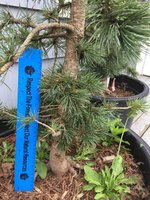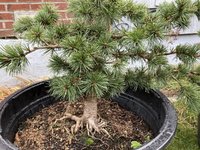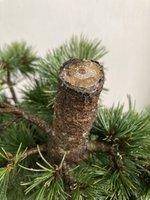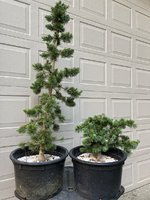Cruiser
Chumono
Hello everyone,
I recently acquired two Colorado bristlecone pines and would like to start working them into bonsais. They are approx 4.5’ tall with 5” circumferences.
Id like to chop them down to more reasonable sizes. There’s some back budding about a foot up the trunk so my first thought was to cut just above that or maybe a little further up.
Can someone please advise?
I recently acquired two Colorado bristlecone pines and would like to start working them into bonsais. They are approx 4.5’ tall with 5” circumferences.
Id like to chop them down to more reasonable sizes. There’s some back budding about a foot up the trunk so my first thought was to cut just above that or maybe a little further up.
Can someone please advise?





















